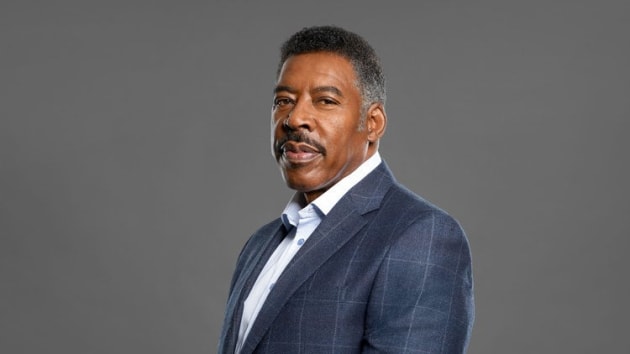After many years of starts and stops, the long-awaited reimagining of the horse racing portion of Belmont Park is finally off and running.
Funded with a $455 million loan that was approved last month with New York State’s fiscal year 2024 budget, the New York Racing Association is now embarking on one of the largest racetrack redevelopment projects of the modern era.
NYRA has retained the global design and planning firm Populous to help guide the project. The firm, which designed the UBS Arena on the Belmont Park property, is engaged in the ongoing renovations at Churchill Downs in Louisville, Ky. and is also working on the new Buffalo Bills stadium in Orchard Park, N.Y., among its many other sporting and entertainment projects.
One of the main objectives of the Elmont facility’s redevelopment is to right-size its massive and underutilized grandstand and clubhouse. First opened in 1905, Belmont Park was rebuilt in the 1960s and its current 1.25 million-square-foot grandstand, the largest in all of thoroughbred racing, opened in May 1968.
The project will demolish the aging structure and replace it with a building that’s less than a quarter of its size, around 275,000 square feet. That will also free up some parkland and allow for expansion of Belmont’s backyard, which had been truncated by the construction of the UBS Arena.

Photo by Judy Walker
“When Belmont was built, there weren’t any casinos or any other forms of wagering, lottery, or anything, so for people who wanted to gamble, this was really the only form. You could get crowds of 25,000 or 35,000 on a regular basis,” says Michael Dubb, NYRA board member and chairman of its new development committee, which is overseeing the project. “Now people still wager, but except for big days like the Belmont Stakes, the need for a facility that size is not there because people wager remotely, through live streaming or on TV, so the need really changed.”
Though this year’s Belmont Stakes drew a little more than 48,000 fans, the Belmont Park opening day attendance on May 4 was just over 2,100. The historic venue’s redevelopment project is aimed at attracting thousands more.
“Modernizing Belmont Park will create the world-class sports and entertainment destination New Yorkers deserve, while creating thousands of jobs, generating billions in economic impact, and ensuring the sport of horse racing continues to create jobs and support communities on Long Island and throughout the state,” said NYRA CEO David O’Rourke. “That’s exactly why this transformational project enjoys broad support among New Yorkers, elected officials, organized labor and the statewide business community.”
Besides building a smaller, more modern clubhouse and grandstand that will be filled with multiple bars, lounges and dining options, there will be other improvements with the redevelopment. A tunnel will eventually be used to connect fans from the parking lot to Belmont’s 45-acre infield, similar to Churchill Downs, which employs its tunnel for fans to get to the track’s infield on special days like the Kentucky Derby. NYRA will also pursue opportunities to use the infield for community events.
In addition, NYRA will add a fourth track to join Belmont Park’s dirt track and two turf tracks. The new track will have a synthetic surface, which Dubb says is similar in feel to grass for the horses but is a much safer surface that should cut down on racing injuries.

Photo by Judy Walker
“We will be perhaps the leader in the world in terms of racing facilities with four different surfaces,” said Dubb, who is also principal of the Beechwood Organization, one of Long Island’s most prolific housing developers. “All that will do is attract the best horses in the country and the world to come to big events.”
The new Belmont building will be winterized to accommodate year-round racing, allowing winter racing and training activities to be moved from Aqueduct. This will also pave the way for the state to develop the 110-acre Aqueduct property in South Ozone Park, which was recently appraised at $1 billion.
NYRA says the Belmont improvements will generate $155 million in annual economic output, support 740 new full-time jobs, and produce $10 million in new state and local tax revenue per year. Part of that will come from bringing major events like the Breeders Cup World Championships, which hasn’t stopped at Belmont since 2005, but has already committed to return after the redevelopment is completed.
Dubb pointed to a study that found that there are about 20,000 jobs created around the state in relation to horse racing, including dozens of horse farms and breeding farms.
“Horse racing is a powerful engine for the New York economy that supports families and communities in every corner of the state,” O’Rourke said. “NYRA racetracks employ union electricians and carpenters, trainers and grooms, security guards, maintenance staff, and many others working every day to care for horses and keep these facilities running.”
The state loan that will finance the Belmont project and the planned redevelopment have been lauded by Long Island business and labor leaders.
“Belmont Park is an historic and economically significant asset for Long Island that has not been substantially updated since Neil Armstrong walked on the moon,” said Matt Cohen, president and CEO of the Long Island Association. “This new investment will bring Belmont into the 21st century, unlocking its full potential as a world-class sports and entertainment destination.”
Julie Marchesella, president of the Elmont Chamber of Commerce and past president of the Nassau Council of Chambers of Commerce, said that NYRA has been a “very good member” of the Elmont community, and she looks forward to a modernized Belmont.
“As far as economic development on Long Island, it kind of rounds out the entertainment venues that will be going on Long Island,” Marchesella said. “It’s adjacent to the UBS Arena, but if we get a casino and hotel, that will bring even more people to the Island. And of course, downstate racing really needed more of a highlight.”
Matthew Aracich, president of the Building and Construction Trades Council for Nassau and Suffolk Counties, said the Belmont project will create some 3,000 construction jobs.
“This particular project is covered under the terms of a project labor agreement, which will be negotiated very shortly,” Aracich told LIBN. “This is a quick infusion of development into Nassau County and to the state. It’s all going to be local hire all through the building trades, so the money stays local, including taxes.”
Along with the improvements for fans, NYRA will continue its efforts to modernize backstretch housing for its workers and barn area facilities throughout the property.
Improving conditions for track employees has been a priority for Dubb, a true champion of the state’s horse racing industry, who owns dozens of thoroughbreds which are among the 2,000 or so racehorses stabled year-round at Belmont Park.
Some 23 years ago, Dubb donated and built a daycare center for the children of backstretch workers called Anna House. Dubb has been focused on providing better housing for Belmont’s employees and his efforts have led to the development of two new dormitories, with construction on a third new dormitory slated to begin later this year.
Recent construction activity on the Belmont Park property, which resulted in the development of the UBS Arena, home to the New York Islanders, has continued on the south side of Hempstead Turnpike. That’s where Islanders co-owner Scott Malkin’s firm is building a 340,000-square-foot retail complex called Belmont Park Village. The development, which will house some 170 shops, is expected to be completed next year.
Meanwhile, accommodation will be made while the Belmont Park horse racing venue undergoes its transformation.
“We will move racing to Aqueduct during construction. We also anticipate the possibility of running the Belmont Stakes at Belmont next year, however after that we might have to run the 2025 Belmont Stakes and possibly the 2026 Belmont Stakes at Saratoga,” Dubb said. “We haven’t finalized any plans yet.”
Yet, once just a dream, a new Belmont Park now looms on the horizon.
“We hope to come to a final conceptual agreement of design by the end of the year and start issuing requests for proposals for construction early next year and hope to start construction by the end of 2024,” Dubb said.
That would put completion of the project on track for the first half of 2026.
“At the end of the day, I think it will be a facility really second to none in the world,” said Dubb. “The big beneficiary of that will be Long Island.”
[email protected]
t


























































![Mason Ramsey – Twang [Official Music Video] Mason Ramsey – Twang [Official Music Video]](https://i.ytimg.com/vi/xwe8F_AhLY0/maxresdefault.jpg)


















